
Artist Michael Bilsborough’s delicate, yet violent drawings definitely leave a mark. Our editor exchanged a few words with the California-born, New York-based dynamo. Read the results and see some new pieces, after the jump!
And, of course, be sure to check out Bilsborough’s website.
If your boss objects to drawings of boozing, purging and illustrated sex, consider this feature NSFW.
Queerty: Let’s start simple: what’s your intent as an artist?
Michael Bilsborough: Is that what you call simple? I have a lot of intentions, like trying to pioneer new ideas, offer rare points of view, or reveal something special. But I’m increasingly suspicious that “intentions” are really compulsions, that despite our conceptual pretenses we actually answer to internal obsession. Inspiration is 1% genius and 99% obligation.
QT: There’s been quite a noticeable change in your subjects. The people depicted in 2005 have much more character than your recent work, which features identical, emaciated and quite tragic young figures. Why the shift?
MB: Lately, I’ve directed them to behave like zombies, blindly led by impulse and appetite. They often lack motivation and are stripped of personality. Behaviorism. I’m also thinking of the body in certain states: intoxicated, variously conscious, aroused, unsteady, endangered. So maybe the figures become more diagrammatic, like demonstrating a physical condition more than a unique character. And I’m working less from observation and more from concept. Or maybe I’m becoming such a shut-in that I forget the various ways unique people can look.
QT: Of your 2007 figures – yes, there’s a narrative and the men and women could be interpreted as one, but the similarities seem to be more a – perhaps “critique” isn’t the right word – a commentary on a group of people – a tribe, perhaps?
MB: They’re Western and relatively young. That already signifies a lot. There are traces of critique, but remember Herman’s theory: “I know you are but what I am I?” – or even better, “It takes one to know one.” I also am Western and young, so critique can only go so far.
QT: The Saatchi blog described these figures as “thrill seekers”. Are they simply thrill seekers or did their thrill seeking take a downward spiral?
MB: Both: they are thrill seekers taking a downward spiral, or internally soaring to ecstatic heights and transcendence while externally wading in lowly fluids and banality.

QT: With regard to the 2005/2007 evolution: your previous work seems depicted in a certain period, a certain era. “The After Party” and “Bathroom Lines” have a certain style: the characters look like a blend of americana and a modern violence. Perhaps they’re in the 80s? The space and subjects in “An Enema Mamma Mia” and “Inverted Figure,” meanwhile, have a purgatorial quality. Does that make sense?
MB: Right! Both “After Party” and “Bathroom Lines” were my New Wave Period, with downtown debauchery and a myopic fascination with cosmopolitan indulgence. The music would be 80’s soundtracks. “An Enema Mamma Mia” takes place in a domestic bathroom, a logical interior for a baptism or ablution, cleansing – hence, “An Enema.” And a same-sex, headless Pieta appears in “Enema,” which teases dated, but indelible ideas of matriarchy. “Inverted Figure” is something like a crucifixion, via S&M or ambitious slumber party games. But the prime character, who is not a hero but a victim – or even a willing, passive player – is upside down. That handicaps him, suggests gravity, and reveals upside-down genitals. Incidentally, the pendulous, collapsible texture of testicles is distinctly contemporary, right? Who beat Bruce Nauman to it?

QT: Is violence a rite of passage? On a related note: our parents generation and our generation have both grown up with a super power to fear: the Russians. More our parents, but we got a bit of it, too. The kids coming up now have to worry about the nebulous terrorists. This isn’t really a question, but it’s interesting we’re taught about frightful enemies. That fear becomes a part of our nationalism.
MB: Fascism always needs a great enemy, right? But going further back, we had the Redcoats, the Visigoths, and the Allosaurs. Every generation has its enemy and its war; that’s inevitable. Is that so totally unidealistic of me to say? Every individual finds violence first-hand or by observation. I guess it depends on what you mean by violence. Birth is bloody and terrible, but we smile warmly and cry in the end. Mel Gibson smashing people up in Braveheart is bloody and terrible, but we cheer and clap. Bears chew up fish and we just sort of shrug: “Eh, that’s nature.” They chew up Herzog’s hero and we grunt, “He had it coming.”
QT: There’s strangulation/bounding in a few of the pieces. “Inverted Figure,” obviously, but it comes up in “The Sorrows of Young Werther Werther Werther” and more subtly in “No Easy Way Out”. Why? What’s going on?
MB: I guess that’s a good way to follow up on the impossible question about violence. Strangulation can be murderous, yet it enhances arousal, for some people. Whether it’s alone or between lovers, choking seems a morbid approach to sex, which I wanted in that drawing. The bondage and choking stir menace into the broth, while also yielding the vast relativity of sexuality.
Much of the work is about separating sexual desire from contemplative study, passion from reason. So asphyxiation is a natural surrogate for that idea. So why not decapitation instead? That creeps me out too much.
QT: Back to the 2007 pieces. Is danger erotic? Is fear?
MB: I went skydiving the summer before last and immediately switched from drawing to painting. For an entire year. I needed something hearty, something that made me conscious of physical sensation. I found that in painting more than in drawing. -So the overwhelming terror in skydiving left a residual and weird corporeal awareness in me. Was that a kind of eroticism? I don’t know, but I have to answer the question within the boundaries of myself, because I don’t know how danger affects other people. Danger and fear could be erotic. Inflicting danger and fear could be, too. Boredom and leisure could be, too.
QT: Are these cautionary tales?
MB: No.

QT: “Big enough for the both of us” really intrigues me. It’s one of the most carnivorous of the recent images, but then there’s that one figure clipping his toenails. (is that what he’s doing?) It’s totally absurd and peaceful, in a sinister way, perhaps? Is it the same man throughout or is this an outsider?
MB: He makes me laugh; he’s so at home, so at peace with his toes! I remember that David Hume said something more or less like, “It’s not irrational that a man should will the destruction of the world over the prick of his own finger.” On that note, poking a digit can make us forget our surroundings. I like the pluralistic perspectives of that scene; that the surrounding groups are engaged in Dionysian frenzy and desperate consumption, while that guy just wants to pick his toes, something simple and simian. Yet his basic hygiene is aligned with their libidinal excess, in some ways.
QT: What’s in the locked cabinet in “such great heights?”
MB: Curiosity, Temptation, Obsession, then Frustration. And old photo albums.
QT: How do you think of your titles? What inspires your titles? There’s curiosity, hope and perhaps some anxiety in them: “Big enough for the both of us,” “What could go wrong?”, “Let’s just try it.”…
MB: Those titles mix messages and moods. They could be mantras or promises, assuring and encouraging, or they could be diabolical, desperate, and damning. They are often innuendos and double-edged. In other words, I dwell on them and craft them in the ways that I think of drawings: funny, foreboding, multivalent. I usually pluck them in songs or scripts, or colloquial phrases; then I carry them around and gnaw on them until they match a drawing. “There’s A Place for Us” could be optimistic faith or the outcast’s axiom. It could allude to open space in the sunshiny park or a felching club – it’s effective when you lift it from its showtune origin.
QT: What are you afraid of? Both personally and as an artist?
MB: Abandonment, shopping, bacteria, and poisonous insects. I’m too superstitious to mention the rest.




Image Index:
No Easy Way Out, 2007
Bathroom Lines, 2005
Inverted Figure, 2007
Big Enough For The Both Of Us, 2007
Special thanks to Nicholas Weist for helping coordinate this feature. You’re the best, Weist!

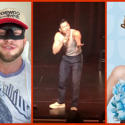
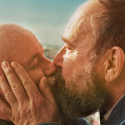

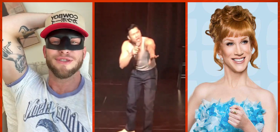

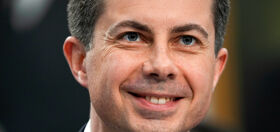
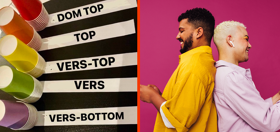


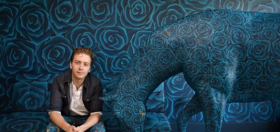


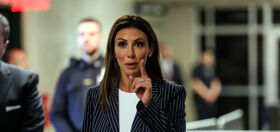


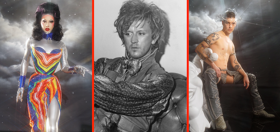
archo
It should be “your” not “you’re”.
Jon
I really hate “art” and paintings, etc., but I LOVE this. His website is really great with lots of great stuff.